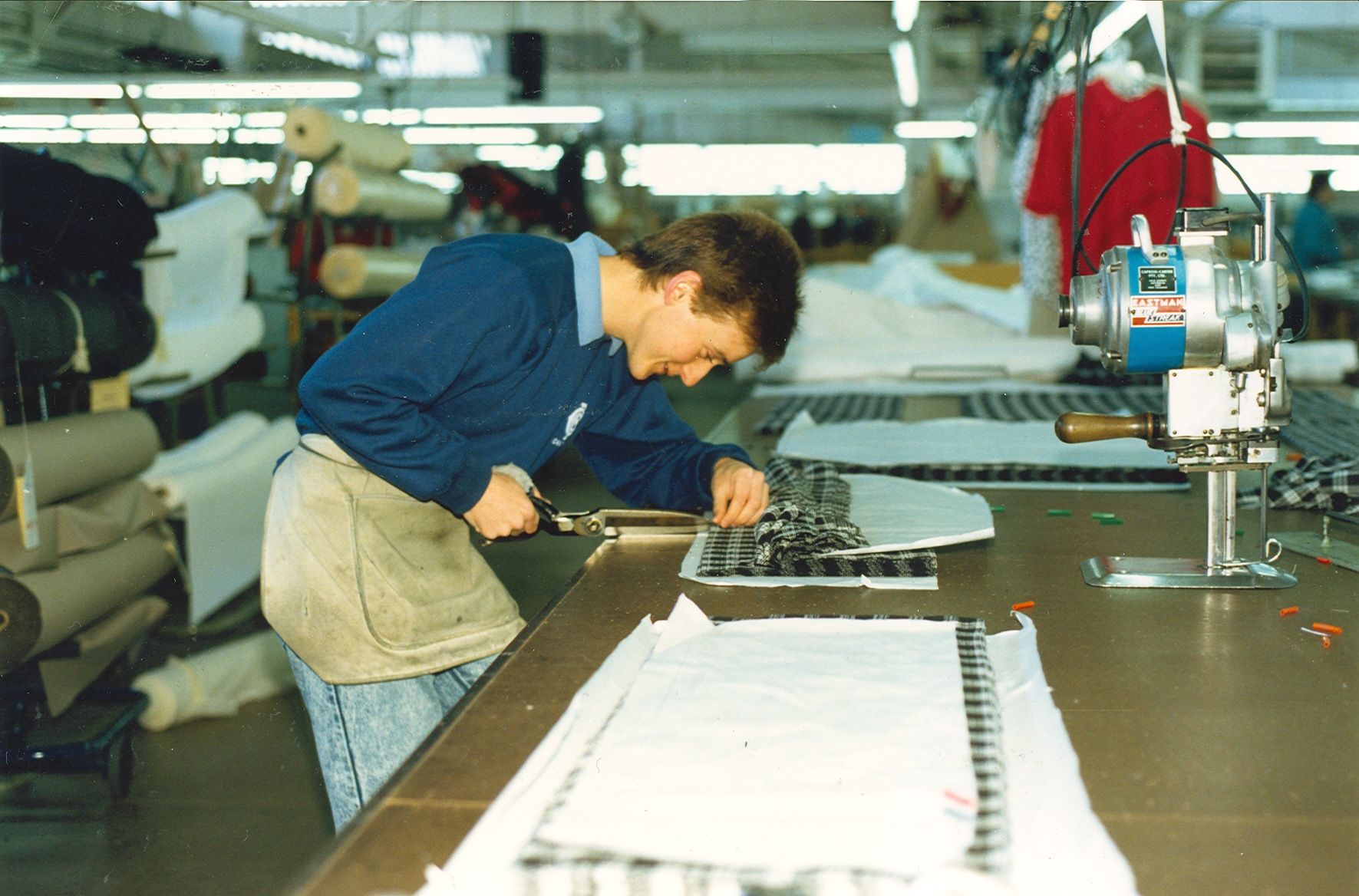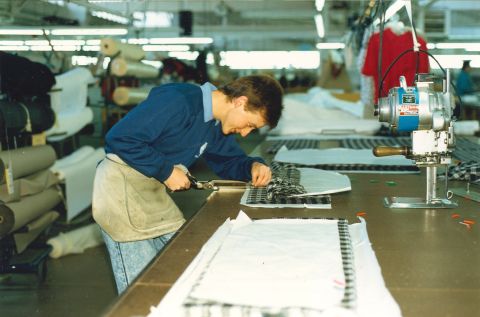We were lucky because we worked for a company called Fletcher Jones.
Warrnambool was wonderful because of Fletcher Jones and he was wonderful because he liked people. “You don’t need an office" he would tell the managers, "your role is on the floor.” He’d walk through the factory on a daily basis and if he saw a new person he’d ask their name and each day as he walked through in the next week, he’s ask a bit more and by the end of the week, he’d know a lot about that person. He helped people and he did it willingly – that was his great strength.
What vision our founder and patron had! He provided us with our life, enabled us to provide for our families, buy our homes and find our place in society within this fair city.
When Sir Fletcher Jones died on 22nd February 1977, he’d left an indelible mark on Warrnambool industry and Warrnambool people. Sure, he had many people who helped him along the way, but he made it happen and he did it by involving others! He involved his staff in every aspect of the company and its success and he involved those around him at every opportunity to be part of that success. This fact is evidenced by the innovation of staff members becoming shareholders of the organisation and sharing in the profits the company made as a result of their toil. In 1988, there were 1000 employees holding $2.4M worth of shares.
One of the ingenious things which the company innovated was the attendance bonus - sixty cents – but how we used to run to make sure we were in the doors on time, five days a week to receive that payment!
In 1978, the FJ organisation consisted of 2,584 personnel and here in Warrnambool, there were 910 of those people. We were privileged to have a Staff Representative Council and a Credit Society at Pleasant Hill. (Incidentally, trousers commenced manufacture in 1948, skirts in 1956, slacks in 1957, men’s suits in1966, ladies and men’s shirts 1971, jeans 1972, ladies jackets 1977 and the Signature Label was launched in 1977. What a record)!
Of course everything manufactured in the clothing industry has to begin somewhere. To make this happen, it required a Cutting Room to shape the fabric accordingly - to produce the parts that could be effectively constructed to make the vital end product of a garment which delivered quality, fit and longevity to its purchaser. The people who made all of this happen ranged from designers, pattern makers, fabric cellar workers, lay makers (both manual and computer), Gerber drivers, cutters that used scissors, electric knives, band saws or the presses that stamped out the small parts.
Those personnel were a diverse and interesting range of people and a source of much knowledge and experience. There were many ex-tailors of various nationalities, both male and female, some young and some old - but they all worked fairly harmoniously together with the one goal in mind. That goal being to provide a product of excellent quality and the perfect fit for every customer. It is unfortunate that many of them have passed on, but the legacy of their work remains as they have also provided us with those special memories associated with each of them, relative to their character and special ability.
Being part of this wonderful organisation, which provided garments of real value during its reign at the top of the garment industry, was indeed a great honour. Something to be very proud of and to tell our grandchildren as time goes by.
This is an edited version of Erle Dakin’s address during the FJs Cutting Room Reunion held June 2016.

